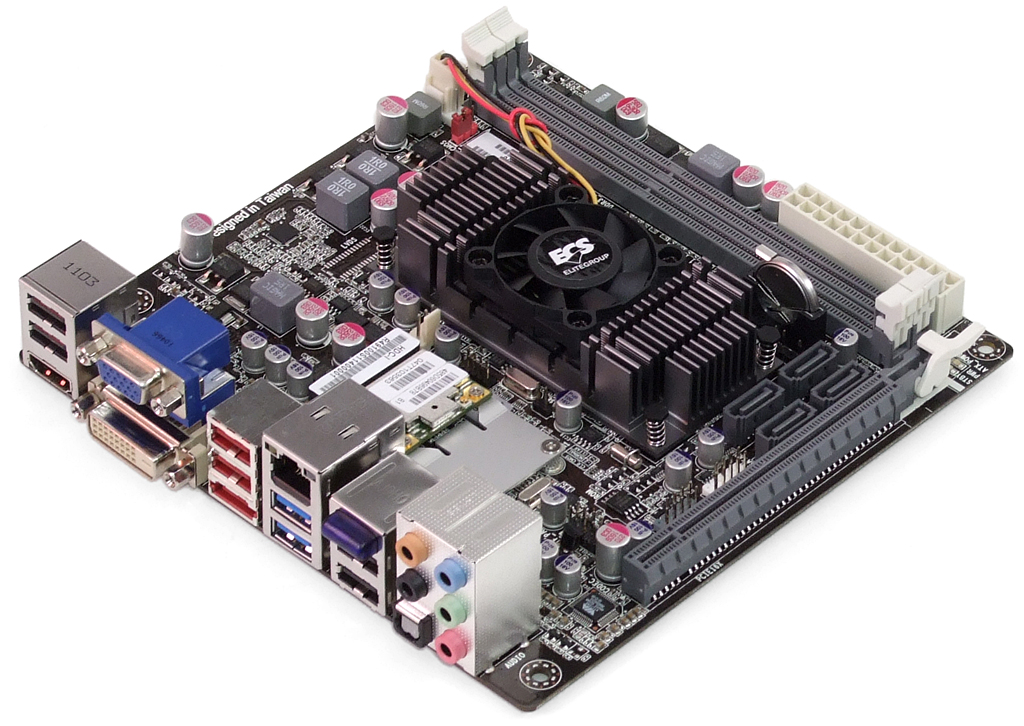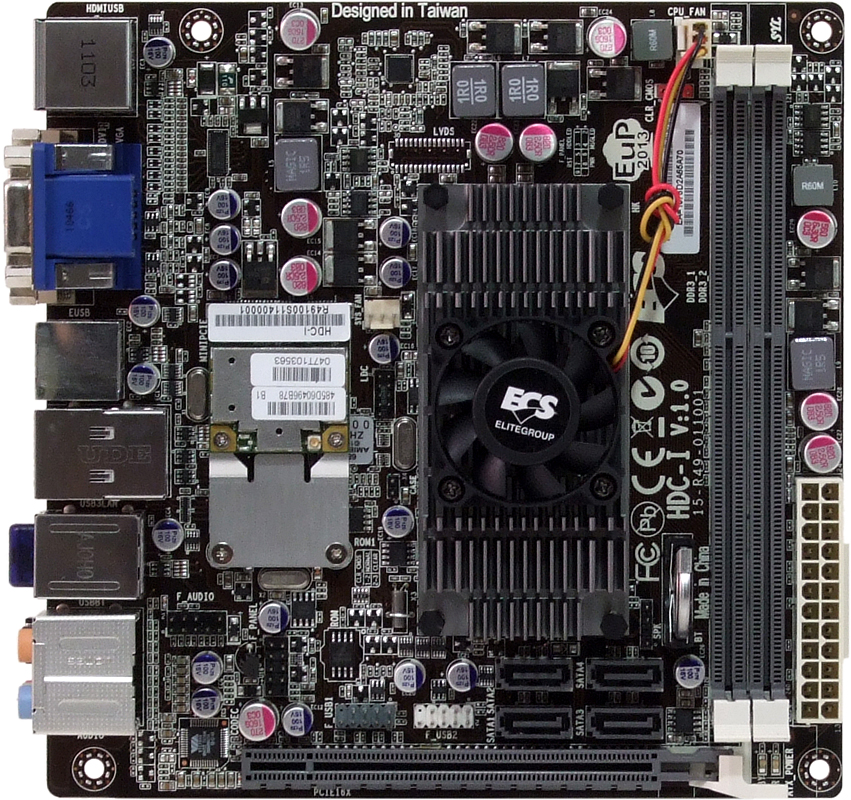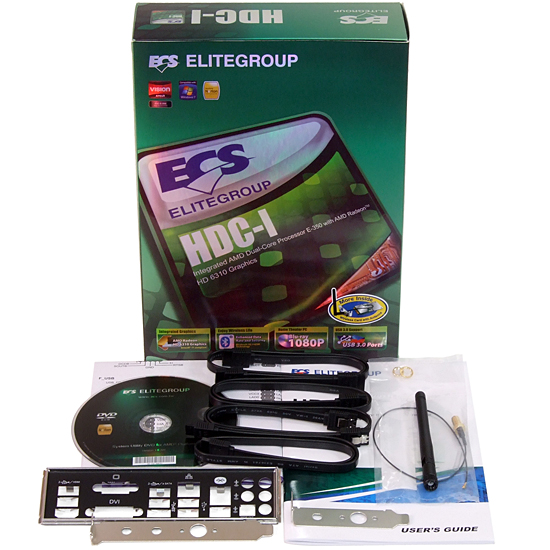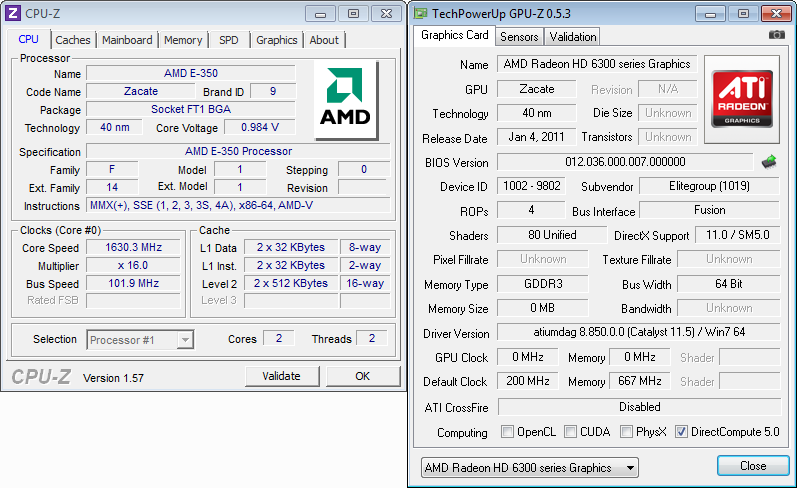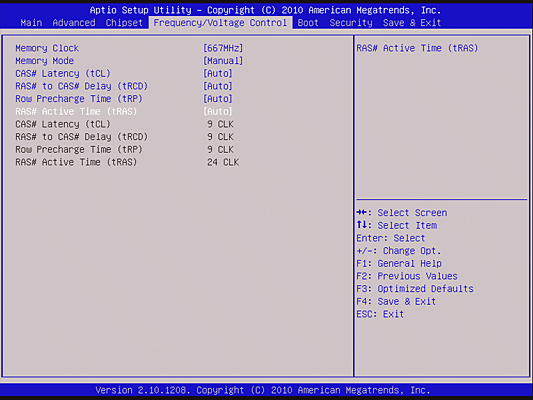The Brazos Round-Up: Eight AMD E-350-Based Motherboards
AMD’s Brazos platform, driven by the Zacate APU, offers a lot of performance per watt. It comes up short on features, though. Eight manufacturers try to change that perception by adding slots, controllers, and even overclocking in a couple of cases.
ECS HDC-I
We like short, easy-to-remember product names, but perhaps a more descriptive moniker could have made ECS’ top Zacate-based Brazos platform a little more memorable. ECS’s promotional efforts for this product might have even benefited the brand if this product were actually obtainable (see Unobtanium, Definition 2, which this author formerly appropriated from old Hot Rod magazines). Our search engines show only the cheaper HDC-I2 available at retail.
A Bluetooth transceiver, Wi-Fi adapter, USB 3.0 controller, and PCIe slot are three things that make the original HDC-I more desirable than its cheaper I2 sibling. ECS also packs the board with twice as many SATA ports, an eSATA port, an HDMI video output, and two more analog audio jacks compared to the part that we could have actually purchased.
In fact, the only things really missing from the HDC-I are the antenna connectors. ECS chose to go with a single-antenna mini PCIe card and a breakout plate for the antenna, where we would have more likely chosen to ditch the VGA output to make room for these at the I/O panel. Anyone who would like to upgrade this board to a different mini PCIe card will be pleased to see that it supports both full-length and half-length replacements.
Unique to ECS is the use of a VIA VT1708B audio codec with DTS Connect. Though most mini-ITX users are primarily interested in multi-channel audio pass-through, DTS Connect also encodes system sounds (such as game surround) to the platform’s digital outputs.
ECS’ inclusion of four SATA cables is a rarity among mini-ITX products. While many users wouldn’t want to sacrifice a slot to support the included Wi-Fi antenna, drilling a hole in the case is also an option.
HDC-I Tuning
Like its Asus competitor, ECS’ HDC-I ignored our memory’s DDR3-1333 programming and instead defaulted to DDR3-1066. This is correctable in the BIOS, and is seen as a memory clock of 667 MHz in GPU-Z.
ECS tries to sneak in an advantage in our benchmark tests by raising the APU clock 1.9% by default. ECS isn’t the only brand to do this, but a 1.9% overclock looks a little guiltier than ASRock’s 1.3%.
ECS does not allow users to choose their own overclock. With only DRAM data rate and memory timings adjustable, performance optimization is kept to a minimum.
Get Tom's Hardware's best news and in-depth reviews, straight to your inbox.
-
gameworm The Zotac board actually is available on NeweggReply
http://www.newegg.com/Product/Product.aspx?Item=N82E16813500068
Only problem is that it is $160 instead of $130
Otherwise very nice roundup. I've been thinking of using one of these for a server/NAS. -
noob2222 Odd timing for the roundup, Llano just came out, these will be discontinued asap.Reply
Not good for much save storage, but that wasn't tested. Would have much rather see an A8 board roundup since they are on newegg now. Picked up one myself for my htpc/storage setup. -
Mathos noob2222Odd timing for the roundup, Llano just came out, these will be discontinued asap.Not good for much save storage, but that wasn't tested. Would have much rather see an A8 board roundup since they are on newegg now. Picked up one myself for my htpc/storage setup.Reply
Uh no, Brazos is bast on the Bobcat core which is a low power version of Bulldozer. These are meant for ultra portables and netbooks, nettops, ultrathin notebooks and the likes.
Llano is the entry level desktop APU until they switch from Stars cores on those to the newer bulldozer cores. -
noob2222 mathosUh no, Brazos is bast on the Bobcat core which is a low power version of Bulldozer. These are meant for ultra portables and netbooks, nettops, ultrathin notebooks and the likes.And yet this roundup is .... desktop boards.Reply
And brazos has nothing in common with bulldozer. -
BulkZerker mathosUh no, Brazos is bast on the Bobcat core which is a low power version of Bulldozer. These are meant for ultra portables and netbooks, nettops, ultrathin notebooks and the likes. Llano is the entry level desktop APU until they switch from Stars cores on those to the newer bulldozer cores.Reply
noob2222And yet this roundup is .... desktop boards. And brazos has nothing in common with bulldozer.
Net TOP. Meaning a low power ITX board. Brazos is merely a stopgap till AMD has the tooling to kick out tons of BD cores. Though I will agree this roundup is a bit late it is at least thorough. -
cangelini gamewormThe Zotac board actually is available on Newegghttp://www.newegg.com/Product/Prod 6813500068Only problem is that it is $160 instead of $130Otherwise very nice roundup. I've been thinking of using one of these for a server/NAS.Reply
Good call--that board only recently became available, after this story was scheduled to be published. We've since updated the conclusion and price chart to reflect the market as of July 4th, 2011.
Cheers,
Chris -
GaMEChld BulkZerkerNet TOP. Meaning a low power ITX board. Brazos is merely a stopgap till AMD has the tooling to kick out tons of BD cores. Though I will agree this roundup is a bit late it is at least thorough.Reply
Brazos is NOT a stopgap, it is meant for very low power applications. It's basically AMD's take on Atom style devices. Bulldozer is not meant to scale to this low power envelope. That's why there are already plans for Brazos successors. Ontario/Zacate will be replaced by Khrishna/Wichita. Llano will be succeeded by Trinity, which is Bulldozer based. Zambezi is supposed to be succeeded by something called Komodo, which I haven't read much about. -
silverblue Trinity and Komodo are both Enhanced Bulldozer. As such, Trinity will not be using Zambezi cores.Reply -
Well, aside from a few bits about Brazos being a stop-gap based on Bulldozer being wrong, the basic premise of "odd timing for a Brazos roundup" holds true.Reply
Llano for laptops is out-freaking-standing, Llano for desktops is amazing for cheap OEM-built desktops and small form-factor HTPCs. TBH, it shouldn't excite much of anyone else, nor was it intended to replace Phenom II + dGPU for enthusiasts.
